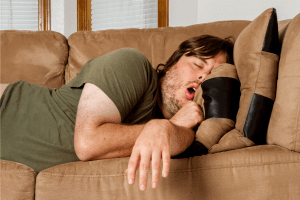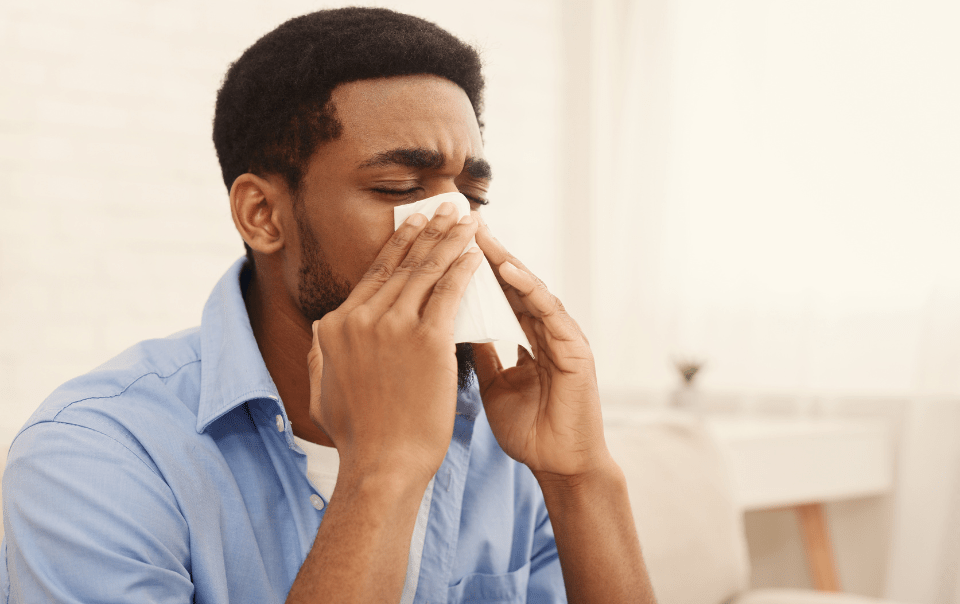Chronic sinusitis and sleep apnea are two conditions that affect millions of people worldwide. While they might seem unrelated at first glance, emerging research suggests a significant link between the two. Understanding how living with chronic sinusitis in Los Angeles can contribute to or exacerbate sleep apnea is crucial for proper diagnosis and treatment. This article explores the connection between chronic sinusitis and sleep apnea, the mechanisms involved, and the implications for patient care.
Chronic Sinusitis: An Overview
Chronic sinusitis, also known as chronic rhinosinusitis (CRS), is a long-term inflammation of the sinuses that persists for 12 weeks or longer despite treatment. The sinuses are air-filled spaces in the skull that produce mucus, which helps trap and eliminate pathogens and debris. When these spaces become inflamed and swollen, mucus can no longer drain properly, leading to a build-up that can cause various symptoms.
Chronic Sinusitis Symptoms
Nasal Congestion: Persistent stuffiness or blockage in the nasal passages.
Thick Nasal Discharge: Mucus that is often thick and discolored.
Facial Pain or Pressure: Discomfort or pressure around the eyes, cheeks, nose, or forehead.
Reduced Sense of Smell and Taste: Diminished ability to detect odors or flavors.
Cough: Persistent cough, often worse at night.
Fatigue: General tiredness or lack of energy.
Chronic sinusitis in Los Angeles is often caused by the following factors:
- Bacterial, viral, or fungal infections.
- Allergic reactions can lead to prolonged inflammation.
- Nasal polyps or abnormal growths in the nasal passages that block mucus drainage.
- Deviated Septum, which is a structural abnormality that affects the nasal passages.
- Smoke, environmental pollutants and other airborne contaminants.
What Is Sleep Apnea?
Sleep apnea
Obstructive Sleep Apnea (OSA): The most common form is caused by a physical airway blockage, usually when the soft tissue in the back of the throat collapses during sleep.
Central Sleep Apnea (CSA): A less common form where the brain fails to send proper signals to the muscles that control breathing.
Complex Sleep Apnea Syndrome: Also known as treatment-emergent central sleep apnea, this condition is a combination of OSA and CSA.
Sleep Apnea Symptoms
- Loud Snoring: A common symptom, particularly in OSA.
- Gasping or Choking During Sleep: Sudden awakenings with a sensation of gasping or choking.
- Excessive Daytime Sleepiness: Feeling very sleepy during the day, even after a full night’s sleep.
- Morning Headaches: Frequent headaches upon waking.
- Difficulty Concentrating: Cognitive impairments, including trouble focusing and memory issues.
The Link Between Chronic Sinusitis and Sleep Apnea
Research indicates a significant association between chronic sinusitis and sleep apnea, particularly OSA. Several mechanisms explain how chronic sinusitis in Los Angeles can contribute to or exacerbate sleep apnea:
Nasal Obstruction and Airflow Limitation
Nasal obstruction is a common symptom of chronic sinusitis. When the nasal passages are blocked due to inflammation, polyps, or mucus build-up, breathing through the nose becomes difficult. This obstruction forces individuals to breathe through their mouths during sleep, which can exacerbate snoring and lead to a reduction in airway size. A smaller airway increases the likelihood of airway collapse, a primary cause of OSA.
Inflammation and Swelling
Chronic sinusitis leads to persistent inflammation in the nasal passages and sinuses. This inflammation can extend to the surrounding tissues, including the pharynx (throat) and lower airways. Swelling in these areas can further narrow the airway, increasing the risk of airway collapse during sleep.
Sleep Disruption and Fragmentation
Chronic sinusitis often causes significant discomfort, including nasal congestion, facial pain, and frequent coughing. These symptoms can disrupt sleep patterns, leading to frequent awakenings and poor sleep quality. Sleep fragmentation from chronic sinusitis can exacerbate the symptoms of sleep apnea, creating a vicious cycle where poor sleep quality worsens both conditions.
Chronic sinusitis in Los Angeles can trigger significant sleep disturbances and reduced sleep quality, which can make sleep apnea more severe. The overlap of symptoms can make it challenging to determine which condition is the primary cause of sleep disruptions.
Diagnosing Chronic Sinusitis
Given the complex relationship between chronic sinusitis and sleep apnea, proper diagnosis and treatment are essential for effective management.
Diagnosis typically involves a combination of patient history, physical examination, and imaging studies. Chronic sinusitis specialists in Los Angeles perform nasal endoscopy to examine the nasal passages and sinuses and use CT scans to provide detailed images of the sinus anatomy.
Diagnosing Sleep Apnea
The diagnosis of sleep apnea usually requires a sleep study (polysomnography), which monitors breathing patterns, oxygen levels, and other physiological parameters during sleep. This study can help determine the severity of sleep apnea and identify the type of apneas occurring.
Treating both chronic sinusitis and sleep apnea often requires a multidisciplinary approach:
Medical Treatment for Sinusitis: This can include decongestants, nasal corticosteroids, antihistamines, antibiotics (for bacterial infections), and saline nasal irrigation. These treatments aim to reduce inflammation, clear mucus, and improve sinus drainage.
Surgical Treatment for Sinusitis: In cases where medical treatments are ineffective, surgical options such as functional endoscopic sinus surgery (FESS) or balloon sinuplasty may be necessary to open the sinuses and improve airflow.
Treatment for Sleep Apnea: Continuous Positive Airway Pressure (CPAP) therapy is the most common treatment for OSA, providing a steady stream of air to keep the airway open during sleep. Other options include oral appliances to reposition the jaw and surgery to remove or tighten excess tissue in the throat.
Lifestyle Modifications: Weight management, avoiding alcohol and sedatives before bedtime, and sleeping on one’s side can help reduce the severity of sleep apnea.
An ENT can determine the extent of sinus disease and its impact on sleep apnea with a medical evaluation, which may include assessing the nasal passages, sinuses, and airway for inflammation, obstruction, and structural abnormalities. There are integrated treatment plans that address both chronic sinusitis and sleep apnea. Some may involve coordinating care with sleep specialists to ensure that both conditions are effectively managed.
Conclusion
The link between chronic sinusitis and sleep apnea underscores the importance of a comprehensive approach to diagnosing and treating these conditions. Nasal obstruction, inflammation, and sleep disruption associated with chronic sinusitis can significantly contribute to the development and exacerbation of sleep apnea. By addressing the underlying causes and employing targeted treatments, patients can achieve better outcomes and improve their quality of life.
Contact the Southern California Sinus Institute to learn more about how chronic sinusitis in Los Angeles may be contributing to your sleep apnea concerns.

